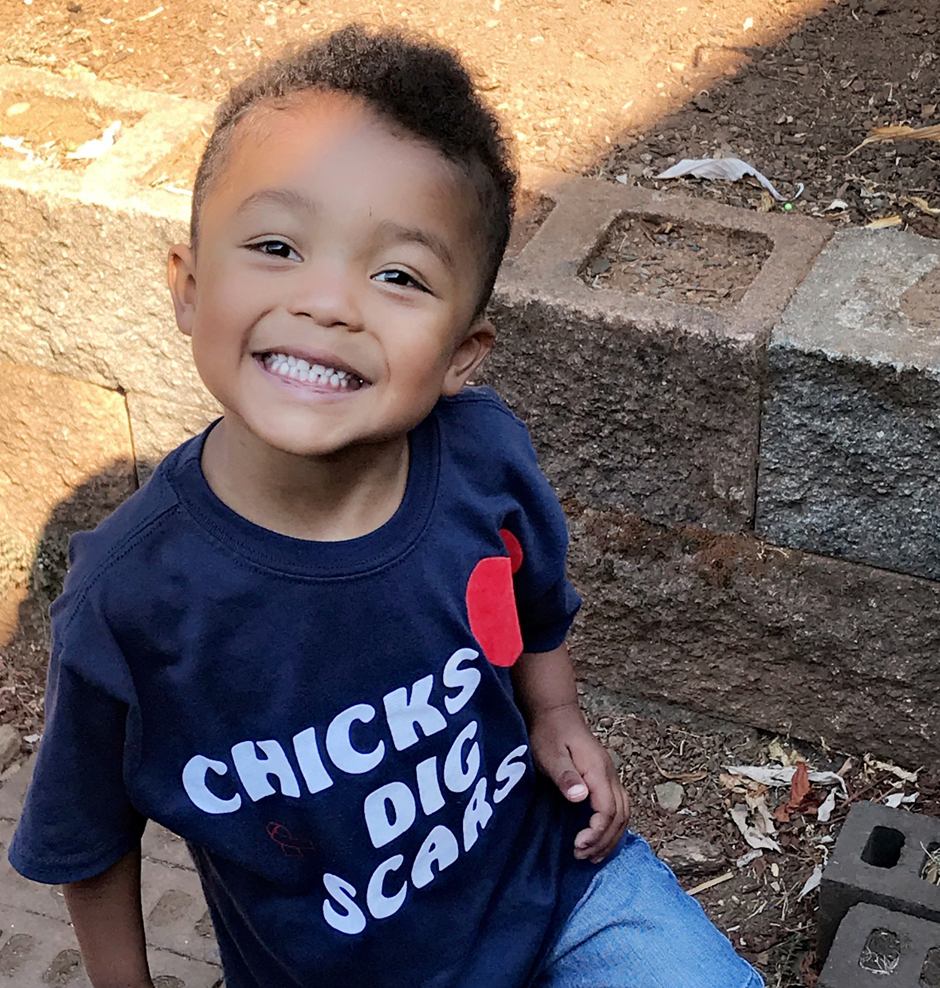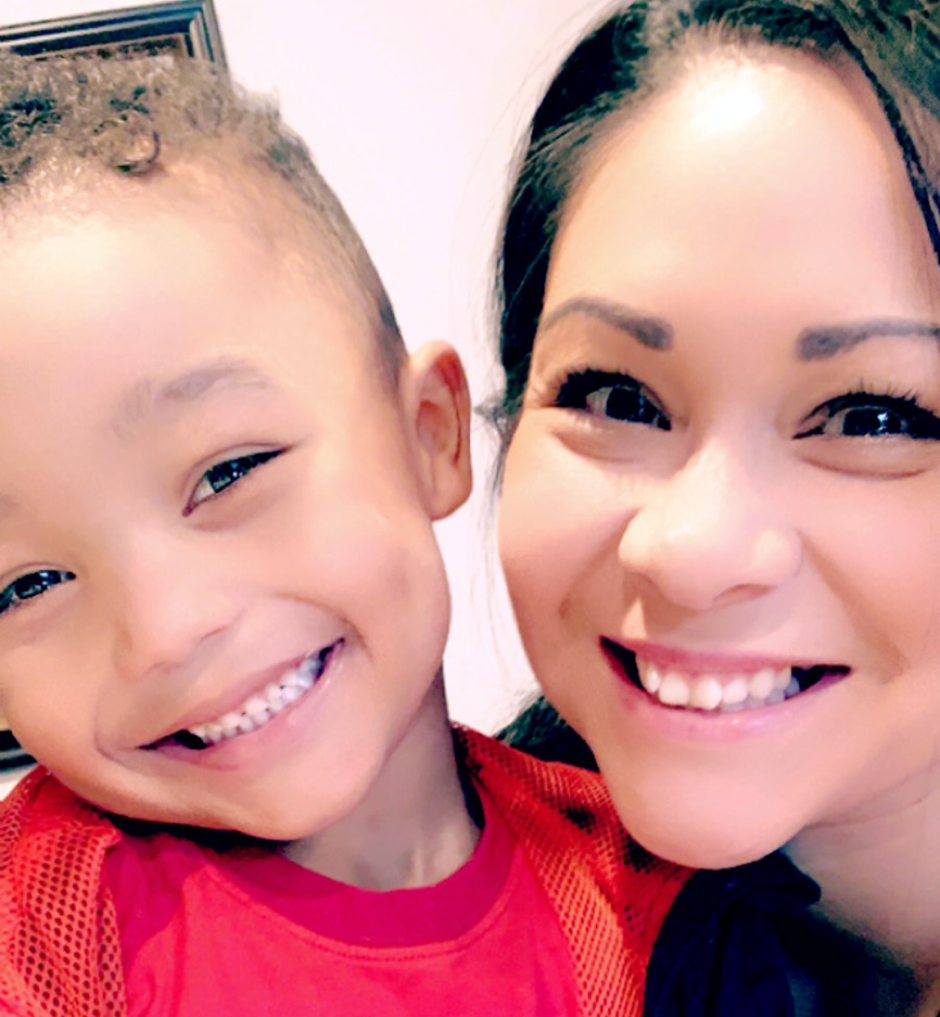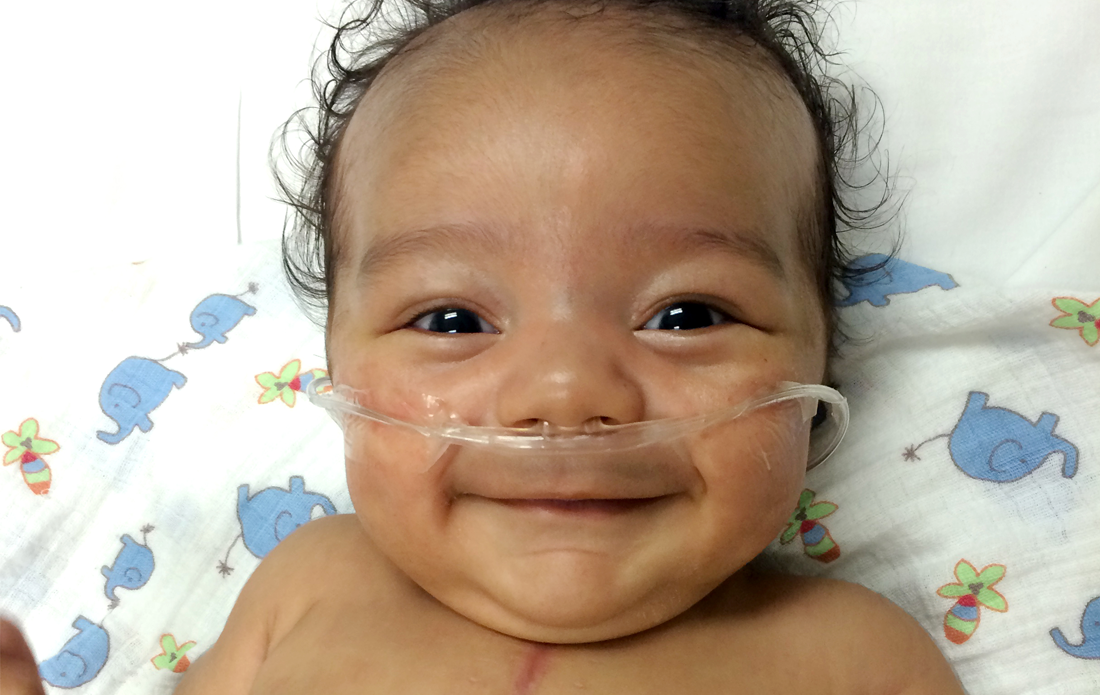Bianca and Jacob Anderson IV were ecstatic to welcome a baby boy into their family of six. When Bianca went to her 20-week ultrasound checkup, the sonographer spent an unusual amount of time looking at the baby’s heart. Bianca had a feeling something was wrong.
The next day, the Andersons received heart-wrenching news. Baby Jacob was diagnosed with a severe congenital heart defect called hypoplastic left heart syndrome — five months before Bianca was due to give birth.
Hypoplastic left heart syndrome causes the left side of the heart to form incorrectly, which doesn’t effectively pump blood through the body. Without surgery, hypoplastic left heart syndrome is fatal within the first few weeks of life.
“I was heartbroken, devastated,” Bianca said. “I didn’t know what the outcome was going to be.”
Specialized care before birth
Pregnancy is the only time in medicine where physicians are caring for two patients at once. When a woman discovers there may be a serious threat to her unborn baby, the stakes are higher.
Congenital heart defects are the most common birth defect in the United States. More than 25 years ago, less than 70 percent of infants with critical congenital heart defects survived one year. Through the years, scientific advancements have helped to improve medical treatments and survival rates.
Technology has advanced, too, to help physicians identify heart defects earlier and with more precision. Up until the 1950s, X-rays were the only images used to help diagnose heart defects — and they only provided information about the size and outline of the heart. Over the years, major breakthroughs developed to include angiography, echocardiography and cardiac MRIs and CTs, each of which have provided increasingly clear, accurate images of the heart.
Today, OHSU Doernbecher uses advanced technologies to achieve the best possible outcomes for mothers and their unborn babies. These include fetal echocardiograms, a high-resolution 3D and 4D ultrasound test that can diagnose complex heart abnormalities, and fetal MRIs, which can help doctors identify structural abnormalities that other tests would miss.
Having the ability to diagnose an unborn child with a congenital heart condition as early as 16 weeks’ gestation allows the health care team and the family to prepare for the road that lies ahead, both medically and mentally, explained Erin Madriago, MD, associate professor of pediatrics (cardiology) in the OHSU School of Medicine, OHSU Doernbecher Children’s Hospital.
In 2012, OHSU established its comprehensive fetal therapy program — the only of its kind in the region — which offers care for a pregnancy complicated by a congenital birth defect and other serious conditions. The program brings together maternal-fetal medicine specialists from the OHSU Center for Women’s Health, pediatric subspecialists from OHSU Doernbecher, and experts in fetal imaging to help families receive accurate diagnoses and plan for treatment after the baby is born.
“Because we knew what to expect, we were able to compile a customized care plan for Jacob that would be implemented as soon as he took his first breath.”
Erin Madriago, MD
After Jacob’s diagnosis, Bianca was referred to this fetal therapy program for the rest of her pregnancy in preparation for his arrival.
Through the program, Bianca underwent genetic testing, as well as monthly ultrasounds and echocardiograms. Bianca’s health care team also developed an individual care plan for Jacob to address his health needs after he was born.
“This advanced monitoring allowed us to closely observe Jacob’s fragile heart for any indication of further change or potential complication as he continued to develop in the womb,” Madriago said. “Because we knew what to expect, we were able to compile a customized care plan for Jacob that would be implemented as soon as he took his first breath.
Forging ahead
After months of preparation, the Andersons headed from their home in Salem, Oregon, to deliver baby Jacob at OHSU Doernbecher. He took his first breath on his own — no machines required — and showed no obvious signs of a heart defect. Because of his diagnosis in the womb, Jacob was then taken to the neonatal intensive care unit to be monitored before his first open heart surgery at just eight days old.
“I was so overwhelmed; it was a whirlwind,” Bianca said. “The team was amazing and kept me informed and at ease. They always let me give my opinion and told me that I know my child best.”
“The heart of everyone at Doernbecher is what gets me. I know if my son needs care, there’s nowhere else I would take him.”
Bianca Anderson, Jacob’s mom
Jacob’s surgery was successful. Throughout his months-long recovery at OHSU Doernbecher, Jacob’s health experienced ups and downs. Before he turned three, Jacob went through an additional two surgeries to correct his heart defect.
“Our journey started with complete uncertainty. CHD was not a part of our vocabulary, but now, we’ve embraced it,” Bianca said. “And, while we still have a long way to go, because of our prenatal diagnosis and the supportive care team at OHSU Doernbecher, we have our son and his future is clear and bright.”

Today, Jacob is an active, thriving 4-year-old with a love for basketball and all things first responder related — ambulances, paramedics, fire trucks and firefighters. Jacob continues to receive coordinated care through his primary care provider in Salem and at Doernbecher.
“The heart of everyone at Doernbecher is what gets me,” Bianca said. “I know if my son needs care, there’s nowhere else I would take him.”


